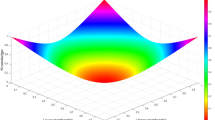Abstract
To solve the problem of poor anti-noise performance of the traditional fuzzy C-means (FCM) algorithm in image segmentation, a novel two-dimensional FCM clustering algorithm for image segmentation was proposed. In this method, the image segmentation was converted into an optimization problem. The fitness function containing neighbor information was set up based on the gray information and the neighbor relations between the pixels described by the improved two-dimensional histogram. By making use of the global searching ability of the predator-prey particle swarm optimization, the optimal cluster center could be obtained by iterative optimization, and the image segmentation could be accomplished. The simulation results show that the segmentation accuracy ratio of the proposed method is above 99%. The proposed algorithm has strong anti-noise capability, high clustering accuracy and good segment effect, indicating that it is an effective algorithm for image segmentation.
Similar content being viewed by others
References
LIEW A W, YAN H, LAW N F. Image segmentation based on adaptive cluster prototype estimation [J]. IEEE Transactions on Fuzzy Systems, 2005, 13(4): 444–449.
LIU Y T. A genetic clustering algorithm for data with non-spherical shape cluster [J]. Pattern Recognition Letter, 2000, 33(1): 1251–1259.
PHAM D L. Fuzzy clustering with spatial constraints [C]// Proceedings of the IEEE International Conference on Image Processing. New York: IEEE Computer Society, 2002, 2: 65–68.
DENG Hua, WU Yi-hu, DUAN Ji-an. Adaptive learning with guaranteed stability for discrete-time recurrent neural networks [J]. Journal of Central South University of Technology, 2007, 14(3): 685–690.
WANG Xiu-juan, SHI Hong-bo. Clustering and fuzzy neural network for fuzzy rule sets modeling [J]. Journal of Central South University of Technology, 2003, 34(4): 360–362. (in Chinese)
CHEN Song-can, ZHANG Dao-qing. Robust image segmentation using FCM with spatial constraints based on new kernel-induced distance measure [J]. IEEE Transactions on Systems, Man, and Cybernetics, 2004, 34(4): 1907–1916.
YU Jin-hua, WANG Yuan-yuan, SHI Xin-ling. Image segmentation with two-dimension fuzzy cluster method based on spatial information [J]. Opto-Electronic Engineering, 2007, 34(4): 114–119. (in Chinese)
WANG X, WANG Y, WANG L. Improving fuzzy C-means clustering based on feature-weight learning [J]. Pattern Recognition Letter, 2004, 25(10): 1123–1132.
AHMED M N, YAMANY S M, MOHAMED N. A modified fuzzy C-means algorithm for bias field estimation and segmentation of MRI data [J]. IEEE Trans on Medical Imaging, 2002, 21(3):193–199.
LI Xiao-he, ZHANG Tai-yi, QU Zhan. Image segmentation using fuzzy clustering with spatial constraints based on Markov random field via Bayesian theory [J]. IEICE Transactions on Fundamentals of Electronics, Communications and Computer Sciences, 2008, 91(3):723–729.
GAO Xin-bo. Fuzzy cluster analysis and its applications [M]. Xi’an: Xidian University Press, 2004: 50–54. (in Chinese)
CLERC M, KENNEDY J. The particle swarm: Explosion, stability, and convergence in a multi-dimensional complex space [J]. IEEE Transaction on Evolutionary Computation, 2004, 6(11): 58–73.
van DEN BERGH F. An analysis of particle swarm optimizaters [D]. Pretoria, South Africa: University of Pretoria, 2001.
SILVA A, NEVES A, COSTA E. An empirical comparison of particle swarm and predator prey optimization [C]// Proceeding of the Artificial Intelligence and Cognitive Science: 13th Irish International Conference. Berlin: Springer-Verlag, 2002: 103–110.
HIGASHITANI M, ISHIGAME A, YASUDA K. Particles swarm optimization considering the concept of predator-prey behavior [C]// Proceedings of 2006 IEEE Congress on Evolutionary Computation. New York: IEEE Computer Society, 2006: 434–437.
Author information
Authors and Affiliations
Corresponding author
Additional information
Foundation item: Project(06JJ50110) supported by the Natural Science Foundation of Hunan Province, China
Rights and permissions
About this article
Cite this article
Zhou, Xc., Shen, Qt. & Liu, Lm. New two-dimensional fuzzy C-means clustering algorithm for image segmentation. J. Cent. South Univ. Technol. 15, 882–887 (2008). https://doi.org/10.1007/s11771-008-0161-1
Received:
Accepted:
Published:
Issue Date:
DOI: https://doi.org/10.1007/s11771-008-0161-1




